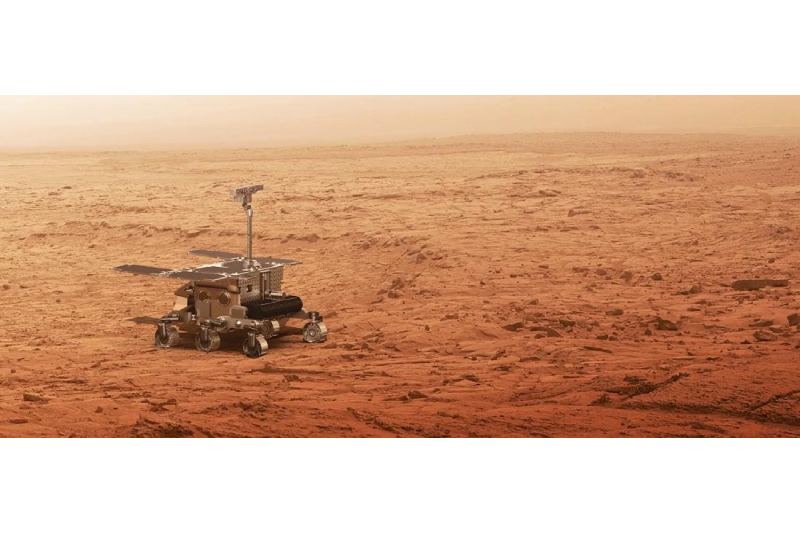A group of businesses was given a contract by the European Space Agency to continue working on a Mars rover mission that was thrown off course by geopolitics two years prior.
On April 9, ESA declared that it has given a team headed by Thales Alenia Space a contract valued at 522 million euros ($567 million) to commence work on the ExoMars Rosalind Franklin mission. The Rosalind Franklin rover, fitted with a drill that can reach a depth of up to two meters, will be sent to the surface of Mars as part of that mission. It will gather material for analysis in order to look for signs of past or current life.
ExoMars was part of an ESA-Roscosmos agreement that also included Russian development of a landing platform for the rover, and it was intended to launch in September 2022 on a Russian Proton rocket. However, weeks after Russia invaded Ukraine in February 2022, ESA halted mission cooperation and placed the finished rover in storage.
The work to replace some of Russia’s contributions is covered by the new contract. The prime contractor, Thales Alenia Space, will oversee the design, assembly, integration, and testing of a new landing platform to replace the Russian design. The rover’s manufacturer, Airbus Defence and Space, will supply the landing platform’s mechanical, thermal, and propulsion systems. The heat shield for the landing module and the OHB carrier module will be made by ArianeGroup.
During a briefing about the new contract at the 39th Space Symposium, Massimo Comparini, deputy chief executive and senior vice president for observation, exploration, and navigation at Thales Alenia Space, stated that “There is a complementary difference in technologies and experience that each of the major players in the consortium have,”
The deal will not only help Europe develop critical technologies for entry, descent, and landing, or EDL, but it will also help get ExoMars back on schedule. “The key aspect is that we develop new capabilities in Europe, industrial capabilities,” ESA’s director of human and robotic exploration Daniel Neuenschwander stated at the briefing. “EDL is a key topic.”
He stated the rover itself won’t need to be significantly altered in order to accommodate the new lander. In a statement, Thales Alenia Space said that as part of the deal, the rover and accompanying mission hardware will undergo a “full audit and tests,” and the rover will have a new infrared spectrometer equipment installed.
NASA’s contributions to ExoMars will also come from ESA, as part of a collaboration that was announced following Russia’s expulsion from the mission. NASA will supply radioisotope heating units (RHUs), which are tiny devices that use the heat generated by plutonium decay to keep the spaceship warm, along with aerobraking engines.
The mission will also be launched by NASA, with a current date of the fourth quarter of 2028. According to Neuenschwander, NASA is presently acquiring a launch vehicle for ExoMars, albeit they haven’t decided on one yet. “You can imagine that there are natural candidates that are currently operating launchers going from U.S. soil” that may be utilized for ExoMars, he stated.
Comparini stated that no single element was crucial in achieving the late 2028 launch date. “It’s more the complexity of what must be refurbished and adapted for the mission,” he stated.
With reference to the new contract as a “major stabilization” of the program, Neuenschwander continued, “We are now facing the classical challenges we have in these types of missions.” “Now, a lot of work remains to be done, but we are back on track in a nominal, typical space program.”
